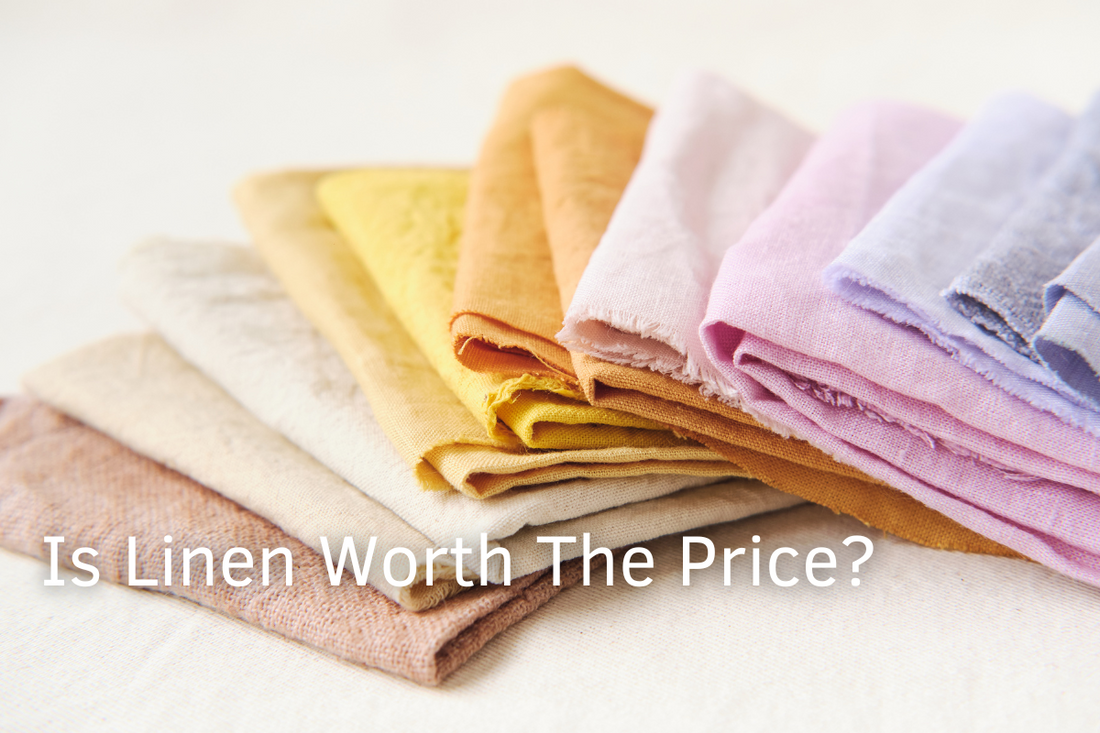
The Real Story Behind Linen's Price Tag - Is It Really Worth It?
Share
Let's face it - linen isn't cheap. Whether you're eyeing those beautiful linen sheets or a breezy summer dress, the price tags can make you wince. But there's actually a fascinating story behind why this fabric costs what it does, and why many people think it's worth every penny.
The Journey From Plant to Fabric
It all starts with the flax plant, which is honestly a bit of a diva in the plant world. Unlike cotton, which grows pretty much anywhere, flax is incredibly picky about its growing conditions. It mainly grows in Western Europe and needs perfect soil and weather conditions to thrive. This pickiness means farmers can't just grow it anywhere they want, which naturally drives up the price from the start.
The real work begins after harvesting. Turning flax into linen is a bit like making a fine wine - it takes time, skill, and a whole lot of patience. Workers need to soak the stalks (called retting), break them down to get rid of the woody bits (breaking and scutching), and then carefully comb the fibers until they're smooth enough to work with (hackling). Most of this is still done by hand or with basic tools because that's how you get the best quality.
What Makes Linen Special?
Here's where linen really shines. Unlike cheap fabrics that start looking sad after a few washes, linen actually gets better with age. It becomes softer and more comfortable every time you wash it, and it's incredibly strong - we're talking about fabric that can last for decades, not just seasons.
The environmental story is pretty impressive too. While cotton needs tons of water and pesticides to grow, flax is much more environmentally friendly. It needs minimal water, barely any pesticides, and farmers use every single part of the plant - nothing goes to waste. In today's world, where we're all trying to be more eco-conscious, this is a big deal.
And let's talk about comfort. Linen has this amazing ability to keep you cool in summer and warm in winter. It wicks away sweat, lets your skin breathe, and even has natural antibacterial properties. If you've ever worn synthetic fabrics on a hot day, you'll appreciate the difference.
Is It Worth The Money?
This is the big question, right? Well, think about it this way: When you buy linen, you're not just buying fabric - you're investing in something that:
- Gets better with age (unlike most clothes)
- Will probably last longer than most relationships
- Keeps you comfortable in all weather
- Doesn't harm the planet
- Never really goes out of style
Smart Ways to Buy Linen
If you're interested in trying linen but don't want to break the bank, here are some practical tips:
- Start small with something like a kitchen towel or scarf
- Look for end-of-season sales (especially in winter for summer items)
- Check out vintage stores - pre-loved linen can be amazing
- Consider linen blends, which give you some benefits at a lower price
- Stick to neutral colors that won't go out of style
Taking Care of Your Investment
Once you've got your linen pieces, taking care of them isn't complicated - it's just different. Wash them properly, store them with care, and they'll reward you by lasting for years and getting more comfortable with time.
The Bottom Line
Yes, linen is expensive. But when you understand what goes into making it and what you get in return - incredible durability, timeless style, amazing comfort, and environmental friendliness - the price starts to make more sense. It's like investing in a really good mattress or a quality pair of shoes - sometimes spending more upfront saves you money (and headaches) in the long run.
So next time you're debating whether to splurge on that gorgeous Rimore linen piece, remember: you're not just buying fabric, you're investing in something that could become a favorite part of your wardrobe or home for years to come. And in a world of fast fashion and disposable everything, that's pretty special.
